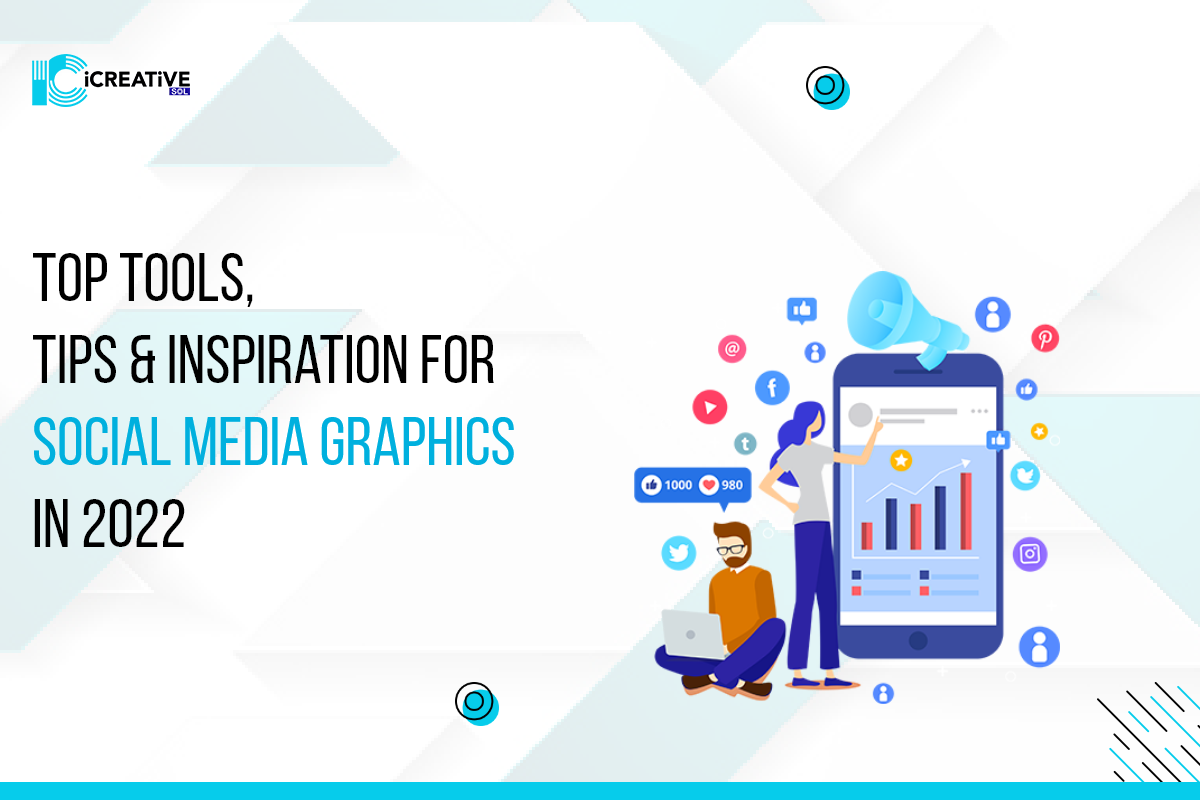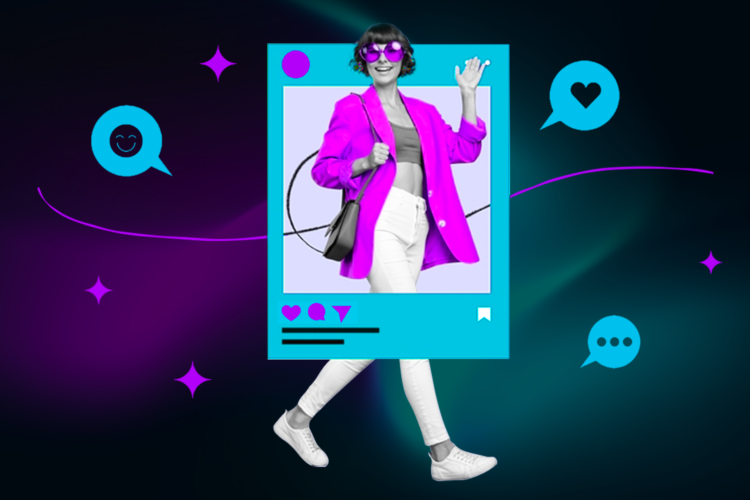
Top Tools, Tips & Inspiration for Social Media Graphics in 2022
Social Media Marketing is one of the critical elements of Digital Marketing. It requires a lot of effort to boost your Social Media to engage your target customers. Do you have the right content strategy? Does your content provide value to your customers? Is your content engaging? While there is a lot to consider while optimizing your brand’s social media, we are going to discuss the Graphics part of social media. If you want to focus on your core business and do not have time to create eye-catchy social media graphics. Then iCreativeSol is your savior; we have the industry’s best graphic designers who can make the perfect designs as per your requirements.
During a survey, 200 content creators were asked how they market their content. The study showed that Social Media is a significant use case of content, followed by the following:
- 49% of marketers use the content for Facebook.
- 47% for Instagram.
- 42% for LinkedIn.
- and 33% use them for Twitter.
-
What are Social Media Graphics?
Before we delve into the details of tools and tips for social media graphics, let us first understand what Social Media Graphics actually are!
Social Media Graphics are the visual elements of any social media post. It may include images, gifs, and videos.
With over 3.96 billion people using social media worldwide, it has become essential for brands to engage with their target customers with relevant and eye-catchy content so that you have a competitive edge in your niche.
Why is Social Media Graphics so Important for You?
According to a study, we can retain only 10% of any piece of information that we hear. The probability of retaining that information increases to 65% if you attach a picture to it.
Pictures beat texts too. Our brain sees the text as tiny pictures and takes more time to process it. While attaching a pleasing-to-eye photo creates top of a mind awareness level for customers.
Ingredients of a Good Social Media Graphics
A long list of factors plays their role in creating a compelling Social Media Graphic. In this guide below, we will be discussing the most important one:
1. Be Consistent with Your Brand:
Keep all touchpoints to your customers consistent with the brand. It may include color scheme, fonts, and logo style. Using different visuals at different channels may create chaos in the minds of customers. Resultantly, your competitor will be winning customers over you.
2. Right Image Size:
Every social media platform has different image size requirements, whether Instagram stories, Pinterest pins, or Facebook display photos. Ensure the right image size for every image to deliver your message the way you want it t be delivered.
3. Simplicity is the Ultimate Sophistication:
Use the KISS principle – Keep it Simple Silly. Design your visuals so that they deliver your message without complicating it with unimportant information. Keep your content precise and straightforward.
4. Use Templates:
It will save your time and effort. Use templates for your social media posts and simply put the relevant content when required. This way, you don’t have to start your edit process from step one.
5. Be Accessible:
Make your visual content be consumed by everyone. Use alt-text for images and subtitles and make sure that the colors in graphics are accessible to everyone.
6. Right Format:
Use proper format for each media channel. For example, you will be using more professional visuals for your LinkedIn account and more real-life images for Pinterest. Each channel has different requirements according to its audience. So, you have to identify your target audience first to deliver your message the way you intended it.
Tools to Create Your Own Social Media Graphics
1. Canva
Canva is the ultimate solution for brands that do not want to hire a social media graphics designer to design visuals for their social media accounts. It provides an easy-to-use framework with as easy as drag and drops options to create graphics for your social media handles. It has templates for every visual graphic you will ever need. From templates of Instagram stories to videos, logos, and posters, Canva is a versatile graphic design app.
2. Visme
Visme is a perfect tool for marketing personnel with little or no experience in designing and creating engaging diagrams and common design assets. It enables people to transform textual content into visual graphics.
3. Inkscape
Inkscape is a free designing tool. It helps designers to create scalable graphic designs. It is a user-friendly software, which is pretty good for beginners and hobbyists.
The user experience that Inkscape offers is awe-inspiring. Inkscape updates are available routinely. Its developers’ community keeps updating the new features regularly. As it is free software, it also comes with some drawbacks. First of all, its processing is slower than other designing software. Secondly, it is not compatible with Illustrator. Lastly, its mac version contains some errors.
4. Venngage
You can easily create posters, reports, infographics, and presentations with Venngage. It is a close alternate to Canva. It also offers easy-to-use drag and drops options, similar to Canva. Its library has thousands of templates available so that you don’t have to design a social media post from the beginning.
5. Adobe Spark
With the help of Adobe Spark, you can create stunning social graphics, web pages, and short videos. With Adobe Spark, designers can avail free and exclusive professionally designed templates, filters, icons fonts, and shapes from the Adobe Spark web and mobile apps.
All in all, you don’t need to hire a professional graphic designer to create visual graphics for you. With these simple tools, you can design posts for your social media platforms as well as other marketing channels.
Design Tips for Engaging Visual Content:
1. Typography
Picking the right font and structure is essentially important while designing visuals for your social media graphics. Making people notice a picture is difficult but making them read the text in the image is even more challenging. You have to concise your message to a suitable length and place it at a proper position, such that the reader does not find it difficult to find and doesn’t find it lengthy to read.
2. Color
Colors have an extraordinary ability to make an impact on people’s moods. Marketers should learn the psychology of colors and their relevant effect on the audience’s minds. Colors are the major element of branding. Brands pay considerable attention to what color they should select for their communication. Ever wondered why Facebook and Twitter are Blue? Because Blue color depicts a calm and relaxed feeling, you can scroll through the website with a blue theme tirelessly.
Similarly, in marketing communication, organizations should choose a color according to their niche and stay consistent.
3. Contrast
If you want to catch customers’ attention in this competitive world, where people are bombarded with ads on their news feed, you have to use the contrast efficiently. Because human eyes love the contrast. Contrast is related to color, size, texture, shape, layout, type, etc. It helps grab your customer’s attention.
4. Style
In design, the style has a broad definition. It’s a complex mixture of different visual elements like colors, typefaces, compositions, etc. It makes a design recognized from other designs.
Diversify the portfolio of your designs so that you can surprise your followers with a new design every time. This way, your audience will not get bored by the content.
Wrapping Up:
By now, it is clear how crucial social media graphics are! Marketers should pay attention to it, quality content, and other branding elements. In the article above, we have discussed some essential points related to Social Media Graphics and how you can use them to implement them in your brand.
According to Statista, there are 6,567 million users of smartphones as of 2022. You have to identify where your audience is coming from and the ratio of mobile phone to the personal computer of your audience so that you can create your designs accordingly.



